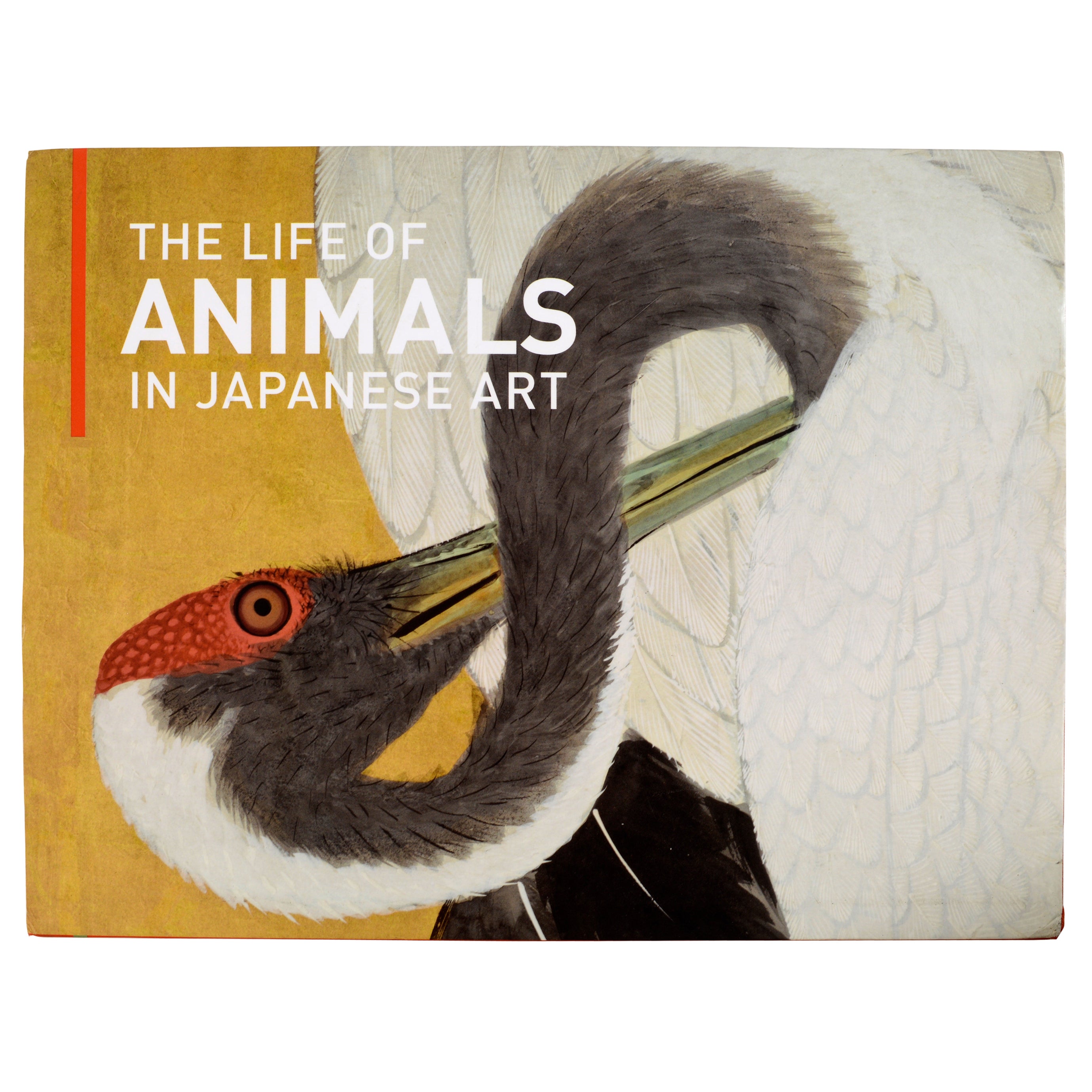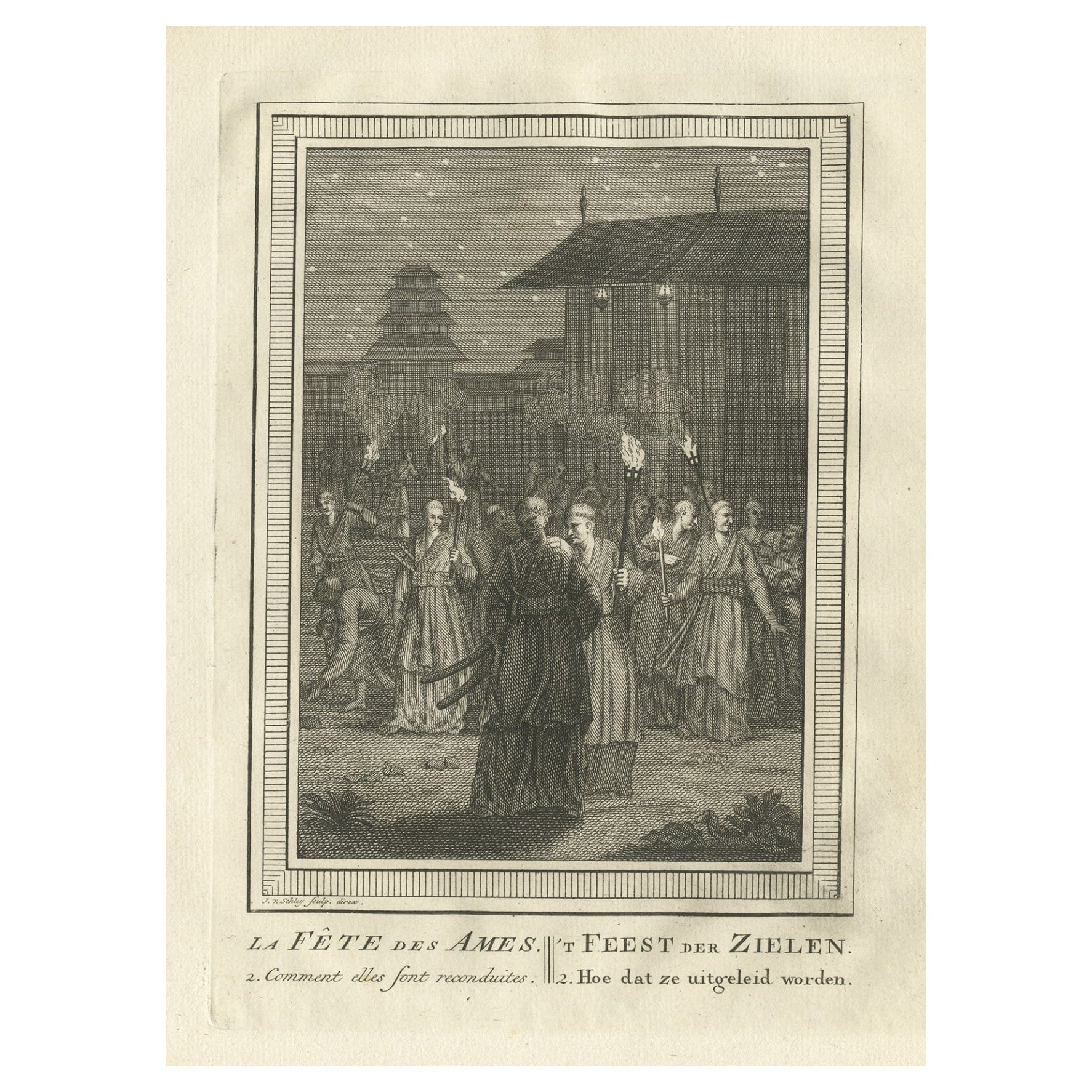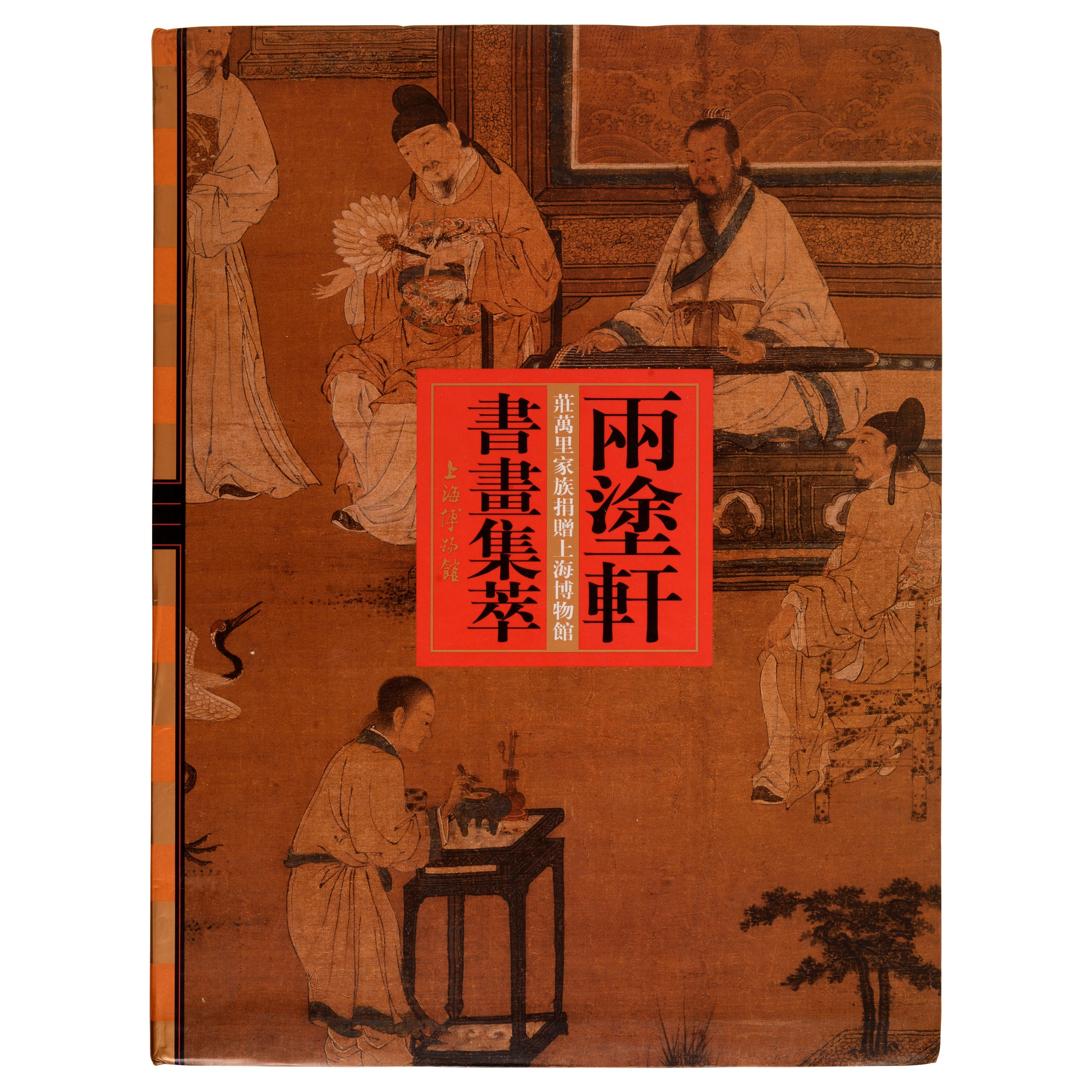Items Similar to Japanese Painting Depicting Commodore Perry’s Ship with Buddhist Monks Aboard
Want more images or videos?
Request additional images or videos from the seller
1 of 6
Japanese Painting Depicting Commodore Perry’s Ship with Buddhist Monks Aboard
About the Item
A Japanese painting depicting Commodore Matthew Perry’s flagship USS Mississippi bringing the coffin with the remains of US marine private Robert Williams who died while serving on the USS Mississippi in Japan, March 6, 1854, aged 21, to the cemetery of the Buddhist Gyokusen-Ji temple in the city of Shimoda
Late Edo period, Bakumatsu, circa 1854
Measures: H. 57.2 x W. 47.8 cm (formerly mounted on a scroll, can be remounted on a scroll)
In the painting is depicted, the USS steamship Mississippi belching black smoke out of her funnel and showing her figurehead. On the front deck, an American sailor is pointing forwards, and behind him, a coffin is covered under a blue flag. The Stars and Stripes has three colours:
“The red of our country’s flag was made redder still by his (her) heroism; the white more stainless pure by the motives which impelled him (her); and, in the starry field of our nation’s glorious banner, the blue has been glorified by the service he (she) has given for America’s ideals”.
In the middle of the ship is a Buddhist monk in a red coat pointing toward the temple on the hill, and behind him, four more monks in brown coats, apparently praying. In his description of the funeral, Wilhelm Heine, the official artist on board the Mississippi, mentions the presence of a Japanese Buddhist monk and Japanese officials on board to accompany the funeral party. On the afterdeck a saluting American sailor and the helmsman below the ceremonial banner of the Gyokusen-ji temple. On top are the American and Japanese flags. On the hill are shown various Gyokusen-ji temple buildings and the graveyard. Gyokusen-Ji is a Buddhist temple located in the city of Shimoda, which later served as the first American consulate in Japan, where the Japanese authorities allowed the bodies of American, and also of Russian sailors to be buried in a Christian ceremony in the graveyard of the temple. Now the temple hosts the Townsend Harris Museum with documents, ukiyo-e, some personal effects of Townsend Harris, the first American Consul General to Japan in 1856, and other items describing the temple during the Bakumatsu period.
In July 1853, the Americans under Commodore Matthew Perry for the first time arrived with his flagship USS Mississippi, the Susquehanna and two sloops in the harbour of Shimoda. Perry remained in Edo Bay until the Shogun accepted an official letter by President Millard Fillmore. In February 1854, Perry returned with a larger fleet of nine ships and remained in Edo Bay as part of a show of force until the signing of the Convention of Kanawaga on 31 March 1854, opening several Japanese harbours for American ships. During the negotiations, the Gyokusen-ji temple hosted the American officers of this flotilla.
Marine private Robert Williams, while serving on the USS Mississippi, died on 6 March 1854 of the ill effects of an earlier received blow to his head given by a Chinese, while Williams was on liberty in China at Cumsing Moon. His body had initially been interred in Yokohama in a Christian burial service conducted by Reverend George Jones on 9 March 1854. After the signing of the Convention of Kanawaga on 31 March, a decision was made to relocate his grave to the grounds of the Gyokusen-Ji temple in Shimoda, prior to the fleet’s departure in June 1854. The funeral of Robert Williams can be seen as the first Christian burial ceremony allowed to take place on Japanese soil since the sakoku edict of 1639 and is the symbolic end to the sakoku policy of the ‘closed country’.
- Dimensions:Height: 22.52 in (57.2 cm)Width: 18.82 in (47.8 cm)Depth: 0.08 in (2 mm)
- Style:Edo (Of the Period)
- Materials and Techniques:
- Place of Origin:
- Period:
- Date of Manufacture:circa 1854
- Condition:Wear consistent with age and use.
- Seller Location:Amsterdam, NL
- Reference Number:1stDibs: LU5458229665652
About the Seller
5.0
Vetted Seller
These experienced sellers undergo a comprehensive evaluation by our team of in-house experts.
Established in 1985
1stDibs seller since 2020
19 sales on 1stDibs
Typical response time: 3 hours
- ShippingRetrieving quote...Ships From: Amsterdam, Netherlands
- Return PolicyA return for this item may be initiated within 7 days of delivery.
More From This SellerView All
- Japanese Screen Depicting USA Commodore Perry’s Flagship the USS MississipiLocated in Amsterdam, NLA rare and fine Japanese six-fold gold-leaf screen with the depiction of Commodore Matthew Perry’s flagship the USS Mississippi Early Bakumatsu period (1853-1867) Measures: H. 61 x W. 183 cm Provenance: Private collection, USA On 8 July 1853 Commodore Matthew Perry with his paddle-wheel warships USS Mississippi and Susquehanna, and two sloops, with a total of 65 guns and little less than 1000 man, for the first time arrived in the harbour of Shimoda, in the bay of Edo, in his own words, “to open doors of commerce, and spread civilization to a backward people, and also to spread the Gospel of God to the heathen.” In Japanese parlance, the American ships quickly became known as “black ships,” depicted as demonic monsters. For the Japanese, these huge coal-burning ships...Category
Antique Late 19th Century Japanese Paintings and Screens
MaterialsPaint, Paper
- Important Japanese six-fold screen depicting The Tale of The Genji, 17th centuryLocated in Amsterdam, NLAn important Japanese six-fold screen, depicting episodes from The Tale of The Genji Edo period, 17th century Ink and colour on gilded paper, H. 155 x W. 380 cm The Tale of Genji...Category
Antique 17th Century Japanese Edo Paintings and Screens
MaterialsPaint, Paper
- Dutch Colonial Japanese Scroll Painting of Chief Merchant DoeffLocated in Amsterdam, NLNagasaki School (EARLY 19TH CENTURY) Opperhoofd Hendrik Doeff with Javanese servant Kakemono, watercolor on paper, mounted on silk and textile covered paper scroll, not signed....Category
Antique Early 19th Century Japanese Edo Paintings and Screens
MaterialsSilk, Paper
- An Indian miniature painting depicting a prince surprising bathing maidensLocated in Amsterdam, NLIndia, Punjab, circa 1755 Signed by the artist Swami 'Ram Rikh' of Seopur and dated Samvat 1812 (1755) Opaque watercolour and gold on paper, H. 23.8 x W. 16.2 cm (image) H. 28.3 x ...Category
Antique 18th Century Indian Paintings and Screens
MaterialsGold
- Chinese Export Trade Painting Depicting ‘the Tea Shop', Chinoiserie ChiqueLocated in Amsterdam, NLA refined Chinese export painting depicting ‘The Tea shop’ Canton, early 19th century Ink and watercolour on silk, H. 63.5 x W. 52.3 cm Framed in giltwood frame. ?The paintin...Category
Antique Early 19th Century Chinese Chinese Export Paintings and Screens
MaterialsSilk
- Unpei Kameyama, 'a View of Black 'American' Ships in the Bay of Uraga Senminato'Located in Amsterdam, NLUnpei Kameyama (1821-1899) A view of black (American) ships in the bay of Uraga Senminato, Miura district, June 1853 The Japanese text reads: ‘The seventy-six old men for the Kitamura-clan, drawn in 1897 on request of Yoshisada Kitamura, Himeji, the black ships which so much changed the fate of Japan, enjoy please this masterpiece by Harima Shonin Bisei who brings back memories of his young days.’ Watercolour on paper, laid down on cardboard, H. 44.5 x W. 115.5 cm Provenance: Collection of Yoshisada Kitamura, Himeji Yoshisada Kitamura (1838-1899), the son of a farmer in the village of Ogawa, in the district of Harimakashikihigashi, studied under Matajiro Otaka and got heavily involved in the anti-Shogunate movement. He was active in several military incidents against the Shogunate. After the Meiji restoration, he served the Meiji government as a local official in the Himeji domain. Kameyama Unpei was a Confucian scholar, a Shinto priest...Category
Antique Mid-19th Century Japanese Edo Paintings and Screens
MaterialsPaper
You May Also Like
- Sotheby's Japanese Prints, Paintings and Screens, New York June 18, 1990Located in valatie, NYSotheby's Japanese prints, paintings and screens, New York June 18, 1990. First edition softcover catalog. 531 illustrated lots.Category
1990s American Books
MaterialsPaper
- Repentant Monk: Illusion and Disillusion in the Art of Chen Hongshou, 1st EdLocated in valatie, NYRepentant Monk: Illusion and Disillusion in the Art of Chen Hongshou, Julia M. White (editor). Published by University of California Press, 2017. 1st Ed ...Category
2010s American Books
MaterialsPaper
- The Life of Animals in Japanese Art, 1st EdLocated in valatie, NYThe Life of Animals in Japanese Art. Published by Princeton University Press, 2019. 1st Ed hardcover exhibition catalog with dust jacket. Few coun...Category
21st Century and Contemporary American Books
MaterialsPaper
- Old Engraving Depicting the Buddhist Festival of Souls 'Obon' in Japan, 1758Located in Langweer, NLAntique print religion titled 'La Fête des Ames - 't Feest der Zielen'. Old print depicting the Buddhist festival of souls (Obon). This print originates from 'Histoire générale des Voyages' by A. Prévost. Obon (??) or just Bon (?) is a Japanese Buddhist custom to honor the spirits of one's ancestors. This Buddhist–Confucian custom has evolved into a family reunion holiday during which people return to ancestral family places and visit and clean their ancestors' graves when the spirits of ancestors are supposed to revisit the household altars. It has been celebrated in Japan for more than 500 years and traditionally includes a dance, known as Bon Odori. The festival of Obon lasts for three days; however, its starting date varies within different regions of Japan. When the lunar calendar was changed to the Gregorian calendar at the beginning of the Meiji era, the localities in Japan responded differently, which resulted in three different times of Obon. Shichigatsu Bon (Bon in July) is based on the solar calendar and is celebrated around the 15th of July in eastern Japan (Kanto region such as Tokyo, Yokohama and the Tohoku region), coinciding with Chugen. Hachigatsu Bon (Bon in August), based on the lunar calendar, is celebrated around the 15th of August and is the most commonly celebrated time. Kyu Bon (Old Bon) is celebrated on the 15th day of the ninth month of the lunar calendar, and so differs each year, which appears between August 8 and September 7. One exception was in 2008 and 2019, when the solar and lunar calendar matched so Hachigatsu Bon and Kyu Bon were celebrated on the same day. Kyu Bon is celebrated in areas such as the northern part of the Kanto region, Chugoku region, Shikoku, and Okinawa Prefecture. These three festival days are not listed as public holidays, but it is customary for people to be given leave. (Source: Wikipedia) Artists and Engravers: Jan van Schley, Dutch engraver. Condition: Very good, please study image carefully. Date: 1758 Overall size: 20.5 x 27 cm. Image size: 13 x 20 cm. We also offer thousands of antique prints covering fields of interest as diverse as architecture, natural history, religion, ethnology and many more. Antique prints have long been appreciated for both their aesthetic and investment value. They were the product of engraved, etched or lithographed plates. These plates were handmade out of wood or metal, which required an incredible level of skill, patience and craftsmanship. Whether you have a house with Victorian furniture or more contemporary decor an old engraving...Category
Antique 1750s Prints
MaterialsPaper
- Selections from the Paintings and Calligraphy Donated to the Shanghai Museum froLocated in valatie, NYSelections from the Paintings and Calligraphy Donated to the Shanghai Museum from the Ching Banlee Liangtuxuan Collection. Published by Shanghai Museum, Shangahai, China, 2002. 1st E...Category
Early 2000s Chinese Books
MaterialsPaper
- Immortal He Xiangu Painting on Canvas, China, 19th Century Asian ArtLocated in Beuzevillette, FRChinese painting depicting He Xiangu reproduced three times but with a different attribute: up a lotus flower, bottom left a fly hunt and bottom right again the lotus flower, each time surrounded by disciple the one praying right, the one on the left seems to bring him a bowl. Pigments on linen or hemp, 19th century. He Xiangu or Ho Hsien-ku, "Immortal Demoiselle He," is an immortal Taoist, a member of the group of Eight Immortals. She is represented holding in her hand a lotus symbolizing spiritual fulfillment, and sometimes also a sheng, a peach of immortality, a wooden ladle...Category
Antique 19th Century Chinese Qing Paintings and Screens
MaterialsCanvas





